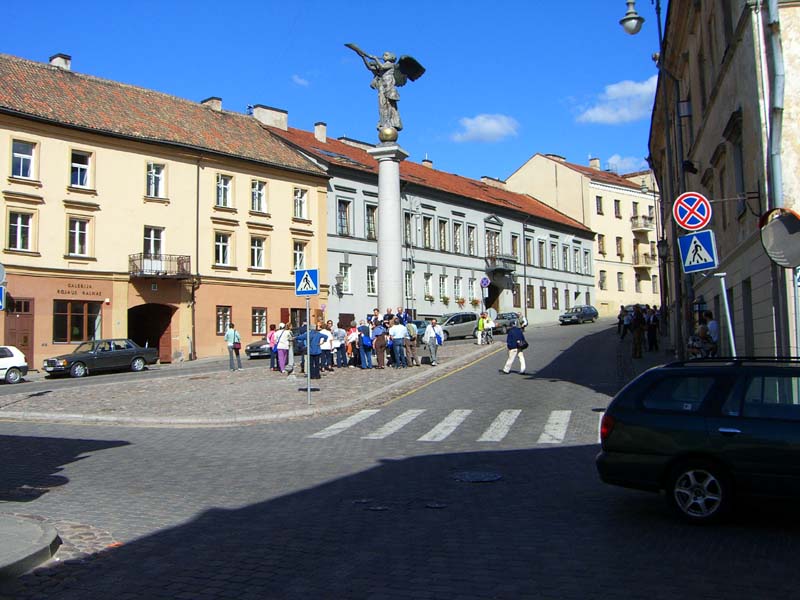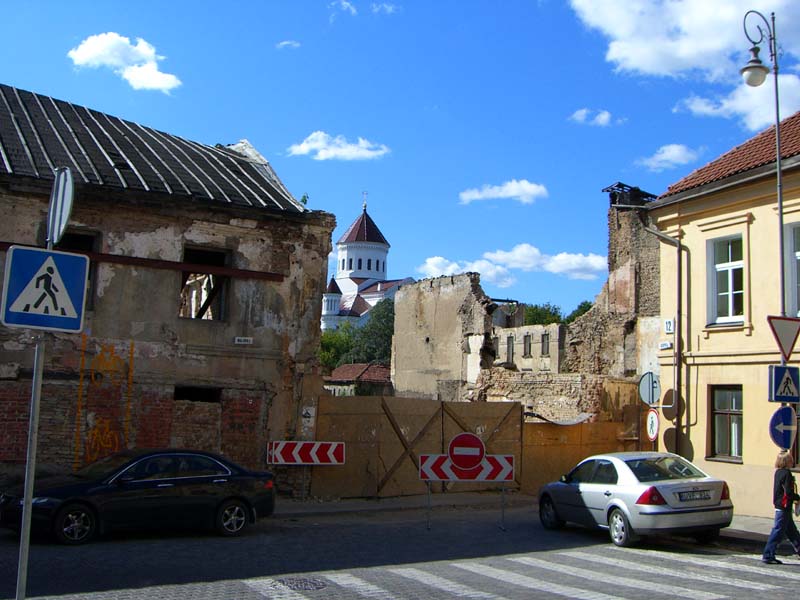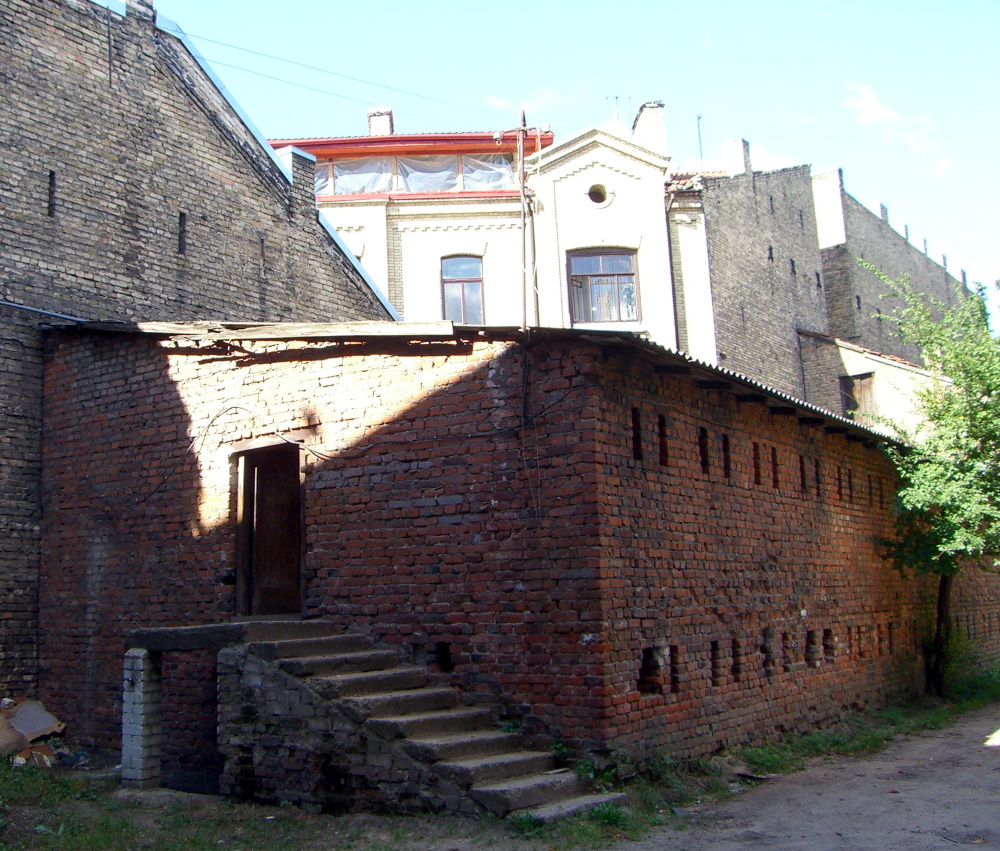Užupis, a neighborhood in Vilnius, Lithuania – a land of contrasts. September 2005
Užupis (prounounced OO-zhoo-pis) approximately means “a place behind the river”. It’s said to have a mystical appeal. It’s full of gothy-looking ruins and old buildings. As in most of the older parts of Vilnius, its architecture is irregular: there are houses built next to and on older houses; curvy, zigzaging courtyards that turn into alleys and disappear into cul-de-sacs; the whole feel of ice floes piled upon one another, which is what I love about Vilnius. But the Užupis buildings are older and have even more character than those in the rest of the city, and they are mixed with scenic vistas of tree-lined hills and Vilnia river.
That, and the closeness to the City Center and Old Town, makes it a piece of prime real estate. In Užupis one can see modern apartment complexes being built right next to old, dilapidated houses with empty eye sockets of broken windows. It may be the haunted, “goth” feel of the ruins that attracts artists, many of which have their workshops here. The artists have even formed their own “Republic of Užupis”. But it still has some of its old population: the poor, the jobless, the alcoholics, the addicted. People who wander around with touristy looks on their faces, like S and I did, are likely to become targets of bums begging money “for cigarettes”. S actually gave an old guy a couple of litas (Lithuanian currency of the time that has since been replaced by euro), maybe because the guy had a cute puppy.
Well, that was in 2004 — 2005. With all the rapid gentrification going on, some of the sights captured in these pictures may no longer exist.

Ruins of an old house in Užupis that accidentally ended up shaped a little like a castle.

The angel of U=upis

The angel square from a different angle: the angel is looking at the ruins. This was September of 2005, and since then the square has improved a lot. All the buildings in it have been renovated. The white towers in the distance belong to the Bernardine monastery.

What I like the most about Uzupis, or Vilnius in general: structures of mysterious purpose fused onto other structures. A short stairway that leads to somewhere in between the first and second floors. Tiny windows that make you wonder what this building was (is?) ever used for. Was it only used for storage, or did anyone live in that nearly windowless space?

Here is the entrance to Jono Meko skersvėjis from the Uzupis street. It approximately means “Jonas Mekas alley” (it’s named after Jonas Mekas, a Lithuanian-American filmmaker, poet and artist of mid-20th century), but the name contains a pun that’s difficult to translate into English. Perhaps the closest approximation would be “Jonas Mekas breezeway”. In any case, back in 2005 the alley did not yet have this designation; it was just a passageway between crumbling, decaying houses. But as you follow it, it turns into stairs that go down all the way to the Vilnia river.

Continuing down the Jonas Mekas alley, you pass this crumbling house on the right. I was taking this picture while facing the entrance, so the house is on my left.


This is me in a cafe called “Prie angelo” (“By the Angel”) in September of 2005. The cafe is next to the angel sculpture seen at the top of the page. The odd-shaped thing behind me might be a part of an old structure uncovered during the renovation.

A bridge over Vilnia river, a.k.a. Vilnelė, in Užupis

A crumbling old house behind a tall, graffitied fence is not an uncommon view in Vilnius. There are several places like that that I have stumbled across. This house with empty window holes is located somewhere close to the St. Ann’s church near the border of the Old Town and Uzupis. It may have been part of a church or a monastery building complex.

A bridge-like structure over Vilnia river in Vilnius, Lithuania. Probably not for human use.
